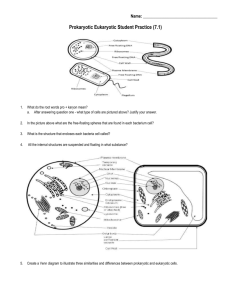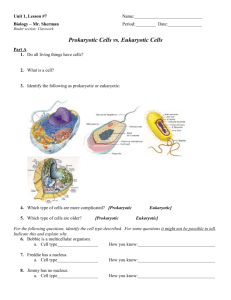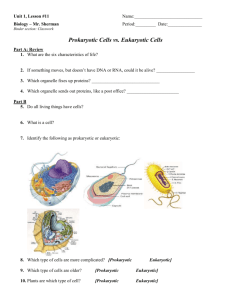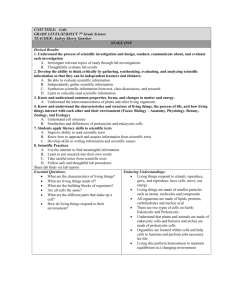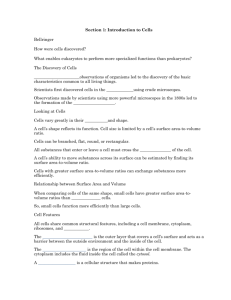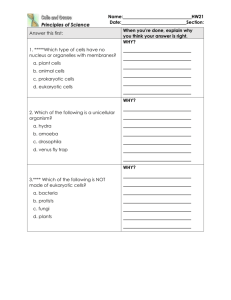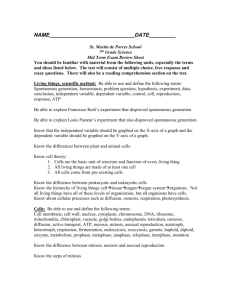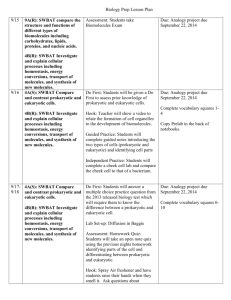Prokaryote and Eukaryote Worksheet
advertisement
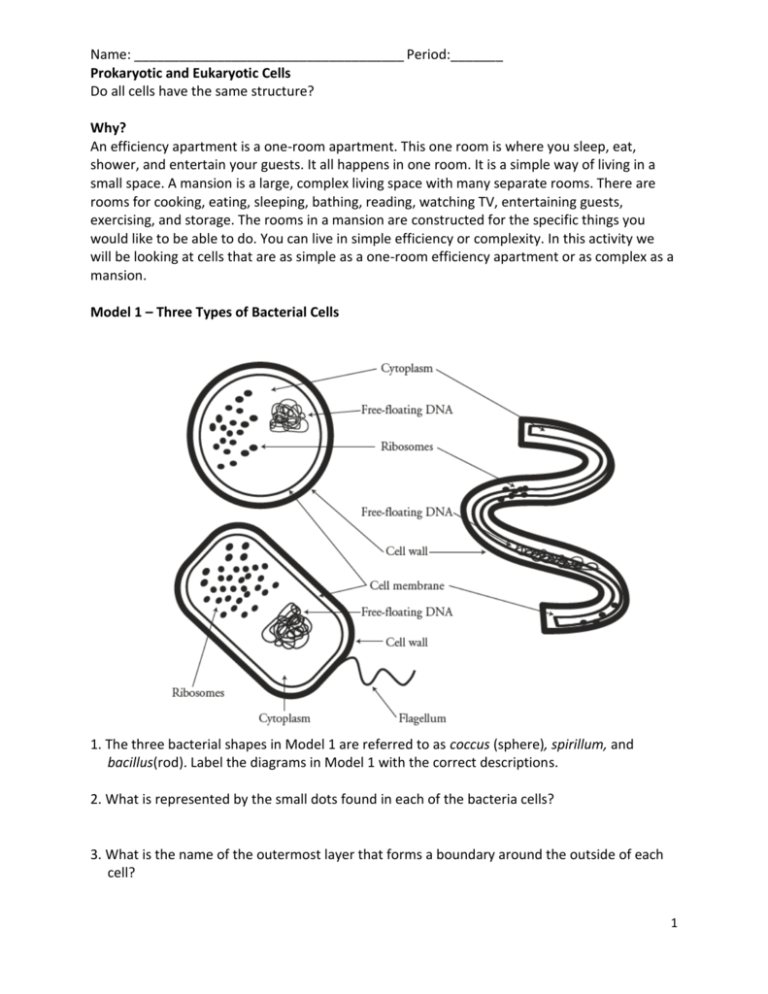
Name: ____________________________________ Period:_______ Prokaryotic and Eukaryotic Cells Do all cells have the same structure? Why? An efficiency apartment is a one-room apartment. This one room is where you sleep, eat, shower, and entertain your guests. It all happens in one room. It is a simple way of living in a small space. A mansion is a large, complex living space with many separate rooms. There are rooms for cooking, eating, sleeping, bathing, reading, watching TV, entertaining guests, exercising, and storage. The rooms in a mansion are constructed for the specific things you would like to be able to do. You can live in simple efficiency or complexity. In this activity we will be looking at cells that are as simple as a one-room efficiency apartment or as complex as a mansion. Model 1 – Three Types of Bacterial Cells 1. The three bacterial shapes in Model 1 are referred to as coccus (sphere), spirillum, and bacillus(rod). Label the diagrams in Model 1 with the correct descriptions. 2. What is represented by the small dots found in each of the bacteria cells? 3. What is the name of the outermost layer that forms a boundary around the outside of each cell? 1 4. How is the DNA described and what does this mean? 5. All the internal structures are suspended (floating) in what substance? 6. One of the bacteria in Model 1 has a tail-like structure. a. What is this structure called? b. What might be the purpose of this structure? c. Based on your answer to the previous question, what might you infer about the absence of this structure in the other two bacteria cells? Model 2 – Animal and Plant Cells 7. Looking at Model 2, list at least three structural differences (other than shape) between an animal and a plant cell. 8. Where do you find the DNA in each cell in Model 2? 2 9. Do both cells in Model 2 have a nucleus? 10. List the structure(s) that form the boundary between the inside and the outside of each cell in Model 2. 11. What is different about the outermost boundary in a plant cell compared to an animal cell? 12. Decide as a group whether the cells in Model 1 or 2 are more complex and list at least three supporting reasons for your choice. Model 3 – Structural Comparisons 13. Use the chart in Model 3 to determine the meaning of the word prokaryote. 14. What does the word eukaryote mean? 15. Based on the above word definitions, label the cells in Model 1 and Model 2 as prokaryotic or eukaryotic. 16. By comparing Model 1 and Model 2, what structures are the same in both prokaryotic and eukaryotic cells? 17. What differences are there between a prokaryotic and eukaryotic cell? 3 18. Refer to Models 1 and 2 to complete the chart below. Write yes or no in the box for each cell. 19. As a group, write a definition for a prokaryotic cell. 20. As a group, write a definition for a eukaryotic cell. 21. Complete the phrase below. Each member must contribute one complete sentence. The words prokaryotic and eukaryotic must be used: All cells are not the same because… 22. As a group, discuss the opening analogy of an efficiency apartment and a mansion (page 1) as it relates to cells. Record your final consensus of how this analogy applies to cell structure. 4 Extension Questions 23. What effect do you expect the structural differences between prokaryotes and eukaryotes to have on their functions? Explain in detail. 24. With as much detail as possible, give another example of an analogy for describing the difference between prokaryotic cells and eukaryotic cells. 25. Complete the chart on the next page by describing the function and structure in each cell. 5 6
